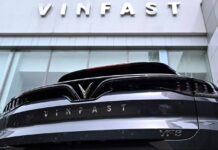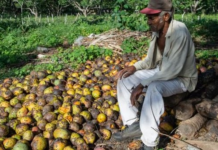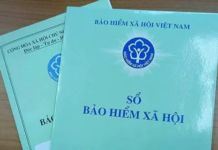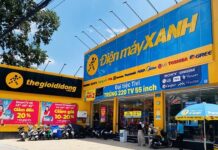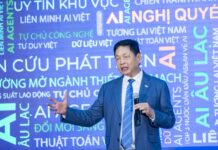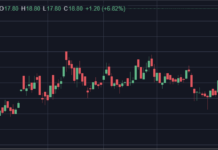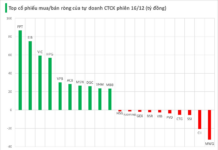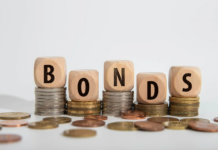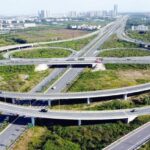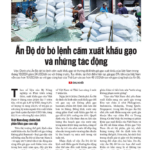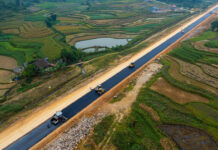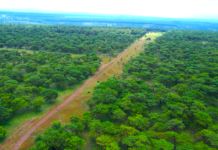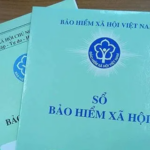France Shows Interest in Vietnam’s High-Speed North-South Railway Project
At the recent inauguration of the elevated section of the Nhon – Hanoi Railway Metro Line, French Ambassador to Vietnam, Mr. Olivier Brochet, fielded questions from the media regarding France’s interest in the North-South high-speed railway project.
In his conversation with the press, Mr. Brochet highlighted the Comprehensive Strategic Partnership between Vietnam and France. He pointed out that transportation cooperation, particularly in the field of railways, is a key aspect of bilateral cooperation between the two countries.
He also emphasized that both Vietnam and France attach great importance to the development of their railway networks, including urban and inter-provincial railways.

Ambassador Olivier Brochet. Photo: Embassy of France
France is closely monitoring the Vietnamese National Assembly’s consideration of the investment policy for the North-South high-speed railway project. Based on this decision, France will determine the optimal way to support the project.
Ambassador Brochet acknowledged that developing a high-speed railway system is a complex task that requires expertise in management and operation. Therefore, France is well-positioned to share its experience and technology with Vietnam.
At the same time, Ambassador Brochet stated that it is challenging to provide a specific answer regarding financial support at this point, as they need to await the decision of the Vietnamese National Assembly and Government on the project’s funding mechanism.
According to the Ambassador, if Vietnam chooses to implement certain parts of the project through a Public-Private Partnership (PPP) model, it would be an area of particular interest for France.
The Nhon – Hanoi Metro Line project is a symbolic representation of French-Vietnamese cooperation in urban transportation development. It utilizes ten train sets that adhere to French technological standards, designed and manufactured entirely in France by Alstom, before being transported to Vietnam.
The project’s financiers include the Treasury Directorate of the French Ministry of Economy and Finance, the French Development Agency, the Asian Development Bank, and the European Investment Bank.
TGV – The Pride of France’s High-Speed Railways
TGV, or Train à Grande Vitesse, is France’s renowned high-speed railway system and is considered one of the country’s breakthrough achievements in the field of transportation.
On September 27, 1981, the first TGV train commenced operations, departing from Paris to Lyon. With a maximum speed of 260 km/h at the time, TGV set a new record for railway speed and quickly attracted a large number of passengers due to its comfort and safety, becoming an integral part of France’s public transportation network.
Moreover, TGV is equipped with high-performance electric motors, capable of reaching speeds of up to 320 km/h on dedicated high-speed tracks. The rails are specially constructed to withstand high forces at high speeds, minimizing vibration and noise for a smooth and comfortable journey.

TGV is manufactured by the state-owned railway company, Alstom. Photo: Alstom
The dual-track technology and advanced suspension system contribute to a seamless and stable ride on the TGV. Continuous advancements in technology and design have kept TGV at the forefront of high-speed rail, meeting the ever-increasing demands for speed and passenger comfort.
The TGV carriages in France are designed with spacious interiors, comfortable seating, and luxurious amenities. Depending on the route and service, the carriages may include features such as wifi, restaurants, bars, and work areas to cater to the diverse needs of travelers.
The aerodynamic design of the locomotive reduces air resistance, enhances energy efficiency, and increases traveling speed. These characteristics not only provide a comfortable journey but also make traveling by TGV a quicker and more convenient option.

Staff and passengers at the French high-speed railway station. Photo: Reuters
Today, the TGV network in France connects almost all major cities in the country, including Paris, Lyon, Marseille, Bordeaux, Lille, and Strasbourg, among others. Thanks to this high-speed rail network, travel times between regions have been significantly reduced, making transportation easier and faster.
Beyond connecting domestic cities, TGV has expanded its reach to neighboring countries such as Belgium, Germany, Switzerland, Italy, and Spain, fostering stronger trade and tourism ties between France and the rest of Europe. The Eurostar line, one of the most famous international routes, connects Paris to London via the Channel Tunnel.
The North-South High-Speed Railway Project will commence from Hanoi (Ngoc Hoi Station) in the north and terminate in Ho Chi Minh City (Thu Thiem Station) in the south. The total length of the route is approximately 1,541 km.
Investment scale: Constructing a new double-track railway with a standard gauge of 1,435 mm, designed speed of 350 km/h, and an axle load of 22.5 tons; building 23 passenger stations and 5 freight stations; operating high-speed passenger trains with the capability of dual-use for national defense and security, and potential freight transportation if necessary.
Preliminary land requirement: approximately 10,827 hectares. The investment type is public investment. The preliminary total investment is estimated at VND 1,713,548 billion (equivalent to USD 67.34 billion).
Implementation schedule: Conduct a pre-feasibility study in 2025-2026; commence construction at the end of 2027; strive for basic completion of the entire route by 2035.
The National Assembly is expected to hear the presentation on the North-South high-speed railway project on the morning of November 13, followed by group discussions in the afternoon and a plenary discussion on November 20. If there is a high consensus, the National Assembly will vote to approve the policy on the closing day (November 30).
Innovating and Collaborating for a Dynamic, Sustainable, and Prosperous Greater Mekong Sub-Region
On the evening of November 8, Prime Minister Pham Minh Chinh and the high-ranking delegation of Vietnam arrived in Hanoi, concluding their work trip to attend the 8th Mekong Subregion – Greater Mekong Subregion (GMS) Summit, the 10th Ayeyawady – Chao Phraya – Mekong Economic Cooperation Strategy (ACMECS) Summit, the 11th Cambodia – Laos – Myanmar – Vietnam (CLMV) Summit, and their official visit to China from November 5 to 8.
Unlocking the Power of PPPs: Harmonizing Interests and Sharing Risks for Mutual Success
It is believed by several National Assembly delegates that in order to unblock the “bottleneck” in infrastructure projects, especially in the field of transportation, it is necessary to devise harmonious solutions that balance the interests and risks of all involved parties when it comes to implementing investment projects through the public-private partnership (PPP) model.
“Vietnam: A Captivating Destination for Global Investment”
With a thriving economy, robust macroeconomic stability, and a strong focus on infrastructure investment and administrative reform, Vietnam is solidifying its position as a highly attractive destination for global investment capital.
Unlocking India’s Rice Exports: Exploring the Impact
The Indian government’s decision to lift the ban on common rice exports has resulted in a $24/ton decrease in Vietnam’s rice export prices in October 2024 compared to the previous month. However, as of now, Vietnam’s 5% broken rice remains more expensive than that of Thailand by $16/ton and India by $46/ton.

